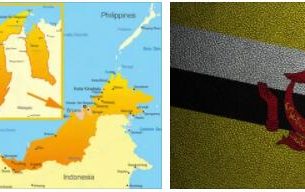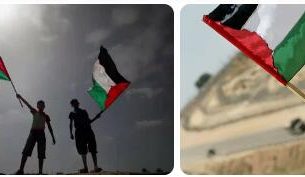Afghanistan, located in South Asia and Central Asia, is a landlocked country known for its rugged terrain, diverse landscapes, and strategic position at the crossroads of major civilizations and trade routes. In this comprehensive overview of the geography of Afghanistan, we’ll explore its physical features, climate, natural resources, and geopolitical significance.
1. Physical Features:
Afghanistan’s geography is characterized by its diverse topography, ranging from high mountain ranges to arid deserts and fertile valleys. The country can be divided into several distinct regions:
- Hindu Kush Mountains: The Hindu Kush mountain range stretches across much of northeastern Afghanistan, forming a natural barrier between the Indian subcontinent and Central Asia. Many of Afghanistan’s highest peaks, including Noshaq, the country’s highest point, are located in the Hindu Kush.
- Central Highlands: The central region of Afghanistan is dominated by high plateaus and rugged mountains, including the Hazarajat and the Koh-i-Baba range. This area is sparsely populated and characterized by harsh, mountainous terrain.
- Southern Plateau: The southern part of Afghanistan consists of a vast, arid plateau, which extends into neighboring Pakistan. This region is known for its dry climate, sandy deserts, and sparse vegetation.
- Amu Darya Basin: In the north, Afghanistan is bordered by the Amu Darya River, which forms part of the country’s northern boundary with Tajikistan, Uzbekistan, and Turkmenistan. The Amu Darya basin is an important agricultural region, with fertile plains and river valleys.
- Sistan Basin: To the southwest, Afghanistan shares a border with Iran, and the region is characterized by the Sistan Basin, an arid lowland area with seasonal rivers and salt flats.
2. Climate:
Afghanistan experiences a variety of climatic conditions due to its diverse geography and elevation. Generally, the climate can be classified into four main zones:
- Mountain Climate: The high mountain regions, including the Hindu Kush and northeastern parts of the country, have a cold, alpine climate with heavy snowfall in winter and cool temperatures in summer.
- Continental Climate: The central highlands and much of northern Afghanistan have a continental climate, characterized by hot summers and cold winters, with limited precipitation.
- Desert Climate: The southern plateau and southwestern regions have a hot, arid desert climate, with high temperatures and very little rainfall throughout the year.
- Steppe Climate: Some parts of northern and western Afghanistan experience a steppe climate, with semi-arid conditions and moderate temperatures. This region receives slightly more precipitation than the desert areas.
3. Natural Resources:
Afghanistan is rich in natural resources, including minerals, precious stones, natural gas, and water resources. Some of the key natural resources include:
- Minerals: Afghanistan is believed to have significant mineral deposits, including copper, iron ore, gold, lithium, and rare earth elements. However, the exploitation of these resources has been hampered by security concerns, political instability, and lack of infrastructure.
- Precious Stones: The country is known for its deposits of precious and semi-precious stones, including lapis lazuli, emeralds, and rubies. These stones have been mined for centuries and contribute to Afghanistan’s cultural heritage and economy.
- Natural Gas: Afghanistan has substantial natural gas reserves, particularly in the northern regions near the Amu Darya basin. Efforts have been made to develop gas fields and explore potential export routes, including pipelines to neighboring countries.
- Water Resources: Afghanistan is a major source of water for the region, with several important rivers, including the Amu Darya, Helmand, and Kabul rivers, flowing through the country. Water resources are essential for agriculture, hydroelectric power generation, and sustaining livelihoods in rural areas.
4. Geopolitical Significance:
According to topschoolsintheusa, Afghanistan’s geography has significant geopolitical importance due to its strategic location at the crossroads of South Asia, Central Asia, and the Middle East. The country’s proximity to major powers, including China, Russia, India, Pakistan, and Iran, has made it a focal point of regional rivalries and geopolitical competition.
- Trade Routes: Afghanistan has historically been a key transit route for trade and commerce between South Asia, Central Asia, and the Middle East. The ancient Silk Road passed through Afghanistan, connecting China with the Mediterranean region.
- Military and Security Concerns: Afghanistan’s rugged terrain and remote border regions have made it a challenging theater for military operations and counterinsurgency efforts. The country has been a battleground for regional conflicts and proxy wars, including the Soviet invasion in the 1980s and the U.S.-led intervention following the 9/11 attacks.
- Regional Connectivity: Efforts have been made to improve regional connectivity and infrastructure through projects such as the Turkmenistan-Afghanistan-Pakistan-India (TAPI) gas pipeline and the Central Asia-South Asia (CASA-1000) electricity transmission project. These initiatives aim to promote economic integration and stability in the region.
- Transnational Threats: Afghanistan’s porous borders and instability have facilitated the spread of transnational threats, including terrorism, drug trafficking, and organized crime. The presence of militant groups such as the Taliban and ISIS has posed security challenges for neighboring countries and the international community.
In conclusion, Afghanistan’s geography is characterized by its diverse landscapes, ranging from high mountain ranges to arid deserts and fertile river valleys. The country’s climate varies from cold alpine conditions in the mountains to hot desert climates in the south. Afghanistan is rich in natural resources, including minerals, precious stones, natural gas, and water resources. However, ongoing conflict, political instability, and security concerns have hampered the exploitation of these resources and hindered economic development. Afghanistan’s strategic location at the crossroads of major civilizations and trade routes has made it a focal point of regional rivalries and geopolitical competition, with implications for regional stability, security, and connectivity.


